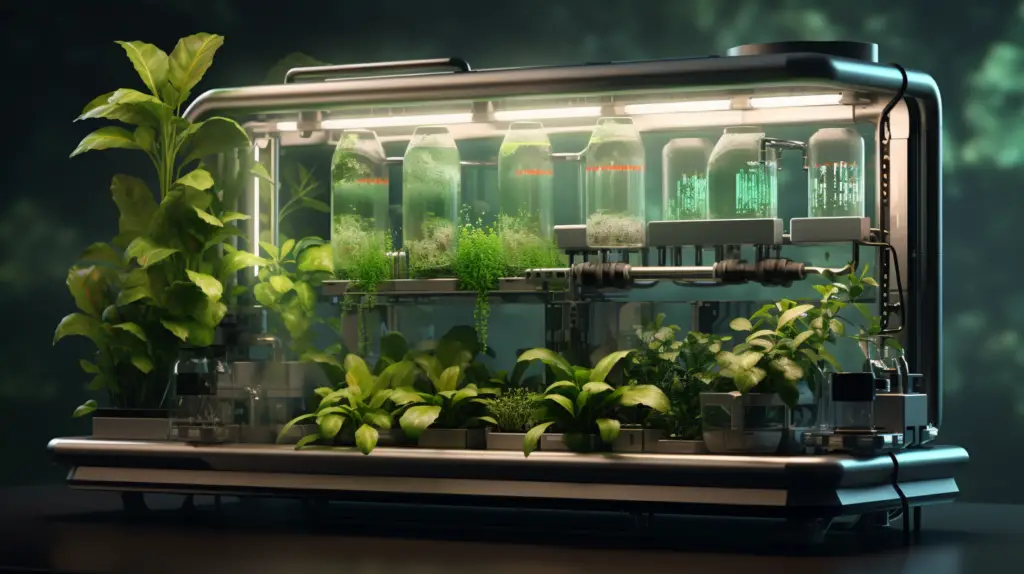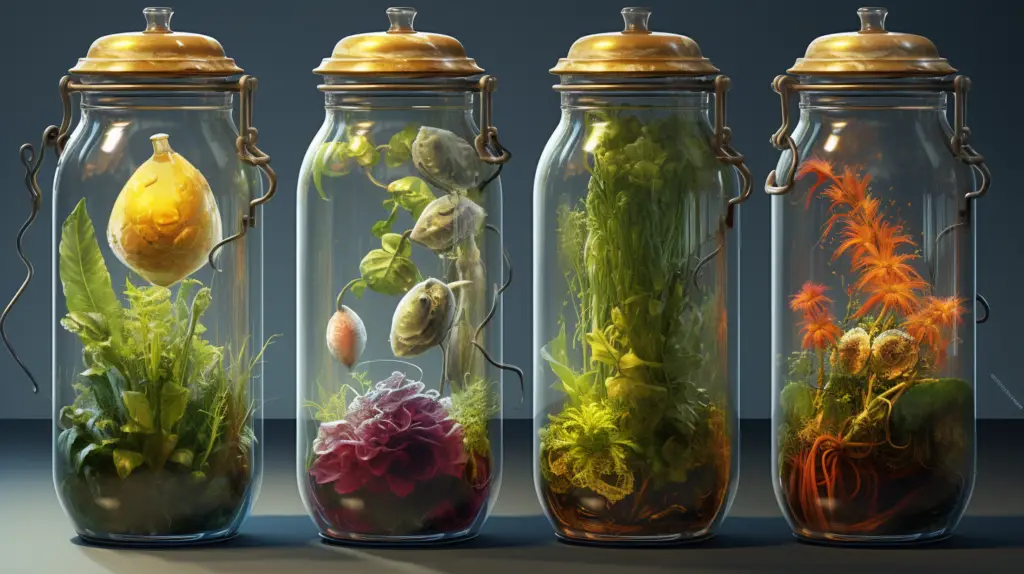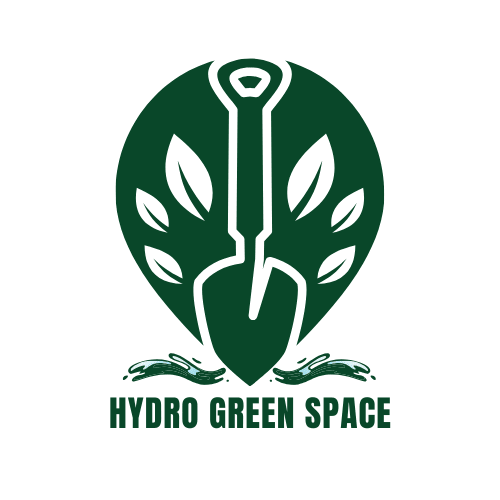DIY Hydroponic Nutrients Solution at Home
Hydroponics: It’s time to party without soil! Nutrient solutions are the lifeline of this soilless system. They provide essential elements for growth and development. Here’s how to make a DIY nutrient solution at home.
Know your plants’ needs. Different plants require different nutrition. Research or consult an expert to identify these needs. Source the required components to create a custom blend.
Online recipes and gardening resources provide great ideas. But, remember not all recipes work the same. Experiment and fine-tune the nutrient solution based on plant feedback.
What is hydroponic gardening?
Grow plants without soil with hydroponic gardening! This method submerges their root systems in a nutrient-rich water solution for faster growth and higher yields. You can use it indoors or in greenhouses for maximum quality, no matter the season. Plus, it’s space-efficient and eco-friendly, too.
Hydroponic gardening eliminates the need for soil and ensures plants get the right nutrients every time. It also reduces the risk of pests and diseases traditional farming methods can bring. Enjoy quicker growth, larger harvests, and no worries about external factors like climate!
Experience the rewards of hydroponic gardening today! Start your own garden and have fresh, nutritious vegetables all year round. But don’t forget: without the right hydroponic nutrients, your plants will be as disappointed as a vegan at a barbecue.
Importance of hydroponic nutrients

To ensure optimal plant growth in hydroponic systems, understanding the importance of hydroponic nutrients is crucial. In order to provide the necessary nutrients for your plants’ well-being, consider the benefits of DIY hydroponic nutrient solution. This allows for customization and cost-effectiveness, leading to healthier and thriving plants.
Benefits of DIY hydroponic nutrient solution
Creating your own DIY hydroponic nutrient solution offers many advantages! You can customize the nutrients to meet the exact needs of your plants, resulting in healthier growth and higher yields.
Plus, it’s cost-efficient and you have control over the purity and quality of the ingredients. It’s also a great learning opportunity – you’ll gain knowledge about plant nutrition and understand how different nutrients affect growth.
You can even fine-tune the nutrient solution for specific plant species or varieties. All you need is basic knowledge and the right ingredients!
To make the most of your DIY solution, monitor and adjust the pH levels for balanced nutrients and avoid lockouts. Also, use quality water and keep track of your plants’ growth and health, adjusting the nutrient mix if needed.
Take control of your plants’ nutrition and enjoy the benefits of DIY hydroponic nutrient solutions! You don’t even need to buy expensive nutrients – why not just feed them leftover pizza crusts instead?
Materials needed for DIY hydroponic nutrient solution
To create your DIY hydroponic nutrient solution at home, you need specific materials. This section focuses on the materials required, including a list of ingredients and the tools necessary for the task. Understanding these essential components is vital for successfully preparing your own hydroponic nutrient solution. Let’s dive into the sub-sections: the list of ingredients and the tools required.
List of ingredients
Gather the necessary components for that DIY hydroponic gardening project, like it’s casting a spell! Water is the base for any hydroponic system. Fertilizers supply essential nutrients for growth, specifically made for hydroponic gardening. Adjust pH levels with acids or bases. Add trace elements so plants can get micronutrients like iron, zinc, and copper.
To make this mix even more effective, get quality fertilizers and measure accurately. Check on plants for nutrient deficiencies or excesses. Keep everything clean. With these tools, you’ll have flourishing plants in an indoor garden. Enjoy gardening!
Tools required
Achieving success with a DIY hydroponic project requires the right tools. Here are the must-haves:
- A pH tester to measure acidity/alkalinity.
- An Electrical Conductivity (EC) meter for measuring dissolved salts in the water.
- A TDS meter measuring total mineral content.
- A pump and timer for regular water/nutrient delivery.
- An air pump and stone to oxygenate and prevent diseases.
Requirements may vary depending on the size and complexity of the system. Monitoring tools like pH testers can significantly boost crop yield, according to Cornell University researchers. Let’s get to it: creating your own DIY hydroponic nutrient solution!
Steps to create DIY hydroponic nutrient solution

To create your own hydroponic nutrient solution at home, follow these steps: Measure and mix the essential nutrients, adjust pH levels, and test the solution. Each sub-section will guide you through the process, ensuring that your homemade nutrient solution is properly balanced and ready to nourish your hydroponic plants.
Step 1: Measure and mix the essential nutrients
Hydroponics is an ancient practice dating back thousands of years. It has recently become popular among gardeners and farmers alike. This article will guide you through the first step of this process: measuring and mixing the essential nutrients.
Accurately measure each nutrient with a digital scale. Weigh out nitrogen, phosphorus, and potassium – these macronutrients are vital for plant growth.
Mix these macronutrients in a container. Fill it halfway with water, then add each nutrient one-by-one. Stir them properly to ensure they dissolve.
Incorporate the micronutrients next. These trace elements are important too. Measure the calcium, magnesium, iron, and other micronutrients specified for your plant species. Add them one-by-one, stirring well after each addition.
It’s important to avoid clumping or settling of nutrients. An evenly mixed nutrient solution will give optimal results for your plants. Finally, remember to check the pH level – because even plants need balance!
Step 2: Adjust pH levels
Ensuring optimal growth of hydroponic plants demands adjusting the pH levels of the nutrient solution. Here’s a step-by-step guide to get the perfect balance:
- Test the pH: Use a reliable testing kit to check the nutrient solution’s pH level. This gives you an idea of the necessary adjustment.
- Lower pH with acid: If the pH is too high, meaning it’s alkaline, add a few drops of phosphoric or nitric acid and stir. Retest until reaching the ideal range of 5.5-6.5.
- Raise pH with alkali: Likewise, if the pH is too low and acidic, increase it by adding potassium hydroxide or sodium bicarbonate. Be careful – these substances can quickly raise the pH. Stir and retest until the desired range is reached.
- Adjust gradually: Avoid drastic changes in acidity or alkalinity, as it can harm the plants. Adjust pH gradually over several intervals till the ideal range is reached.
- Monitor regularly: Once you’ve achieved the right pH balance, keep monitoring and adjusting as needed throughout the plant’s growth cycle.
Remember that maintaining a stable and proper pH is essential for healthy plant development in hydroponics. Take special care of sensitive varieties like lettuce or herbs, which may require more precise adjustments.
Adjusting pH levels correctly is key to providing plants with the best conditions for growth. Take charge of their well-being and watch them flourish in your hydroponic garden! Put your nutrient solution to the test and prove you’ve mastered both gardening and chemistry – a true win-win situation!
Step 3: Testing the solution
Testing the quality of your homemade hydroponic nutrient solution is essential for optimal plant growth. Here are 5 simple steps to take:
- Gather the right equipment, like a pH meter & TDS meter. These help measure acidity & nutrient concentration.
- Use the pH meter to check the solution’s acidity. The ideal range is 5.5-6.5.
- Check the nutrient concentration with a TDS meter. Adjust the concentration to suit specific plants’ needs.
- Compare the TDS reading to the recommended values and guidelines. If it’s too low, add more nutrients. Too high? Reduce them.
- Make the necessary adjustments to the solution. Bring it within the optimal range based on test results.
Consistency in testing is key. This helps you get more accurate results and fine-tune the formula over time. I learned this the hard way; my first batch was too acidic and stunted growth. Testing and adjustments saved the day!
So, don’t forget to test your DIY hydroponic nutrient solution. It’ll save you time and effort, and ensure your plants are well-nourished. Enjoy!
Tips for maintaining and using DIY hydroponic nutrient solution

To maintain and use DIY hydroponic nutrient solution effectively, follow these tips. Ensure proper storage recommendations and adhere to application guidelines to achieve optimal results for your hydroponic setup.
Storage recommendations
Store your DIY hydroponic nutrient solution properly to ensure it’s effective! Here’s what to do:
- Keep it cool and dark – light and heat can break down nutrients.
- Use an airtight container – this prevents oxidation and extends shelf life.
- Label the container with the date of preparation – they have a limited shelf life.
- Keep it away from kids and pets – certain ingredients can be harmful.
Remember, proper storage helps your plants grow healthy!
Pro Tip: Check before using stored nutrients – if they’re questionable, discard them. Hydroponic nutrients are like a guilt-free buffet for your plants!
Application guidelines
When it comes to DIY hydroponic nutrient solutions, there are a few things to keep in mind:
- Stick to the dilution ratios specified for your specific nutrient solution.
- Monitor pH levels regularly, between 5.5 and 6.5.
- Check for any algae, fungus, or other contaminants that might interfere with nutrient uptake.
- Sanitize your equipment before each cycle.
- Consider adding root boosters or bloom enhancers.
Attention to detail and regular monitoring are essential for successful hydroponic gardens. And don’t mix up your nutrient solution with your morning coffee!
Conclusion
It’s time to put together what we’ve learned about making a DIY hydroponic nutrient solution!
Remember, a balanced mix of macro and micro nutrients is essential for any successful system.
Different plants have their own unique needs, so research is key.
Also, adjusting the pH level regularly is vital to maintain optimal growth.
Finally, keep track of your nutrient formulations and any changes.
This will give you confidence for future projects.
Happy gardening!
Frequently Asked Questions
Q1: What is a hydroponic nutrient solution?
A1: Hydroponic nutrient solution is a mixture of essential minerals and nutrients that provides the necessary elements for plant growth in a soilless hydroponic system.
Q2: Can I make my own hydroponic nutrient solution at home?
A2: Yes, you can make your own hydroponic nutrient solution at home using readily available ingredients such as fertilizer salts, Epsom salt, and water-soluble minerals. There are various DIY recipes and guidelines available online to help you create a balanced nutrient solution.
Q3: What are the basic ingredients required for a DIY hydroponic nutrient solution?
A3: The basic ingredients required for a DIY hydroponic nutrient solution include fertilizer salts (such as calcium nitrate, potassium nitrate, and magnesium sulfate), Epsom salt (magnesium sulfate), and water-soluble minerals or trace elements.
Q4: How do I mix the ingredients to create a DIY hydroponic nutrient solution?
A4: To create a DIY hydroponic nutrient solution, you need to accurately measure and mix the ingredients according to the recipe or nutrient formula. It is important to follow the recommended ratios and instructions to avoid creating an unbalanced solution that could harm your plants.
Q5: Can I customize my DIY hydroponic nutrient solution for different plant types?
A5: Yes, you can customize your DIY hydroponic nutrient solution by adjusting the nutrient ratios and adding specific trace elements according to the requirements of different plant types. Different plants have varying nutritional needs, so customization is possible to optimize growth and yield.
Q6: Are DIY hydroponic nutrient solutions as effective as commercially available ones?
A6: DIY hydroponic nutrient solutions, if properly formulated, can be as effective as commercially available ones. However, it requires careful attention to detail and regular monitoring of plant health and nutrient levels. Commercial nutrient solutions are often pre-formulated to provide a balanced mix, making them more convenient for beginners.
